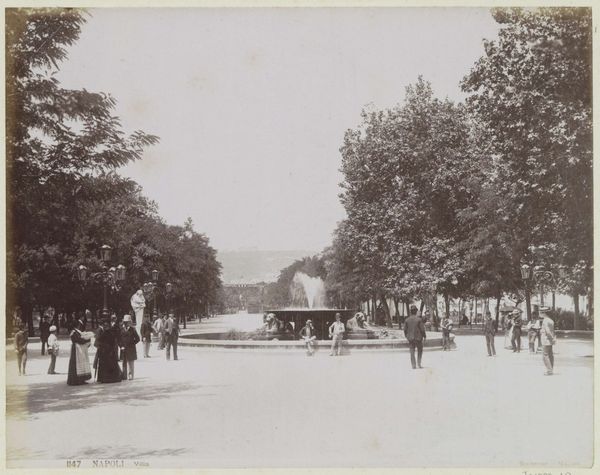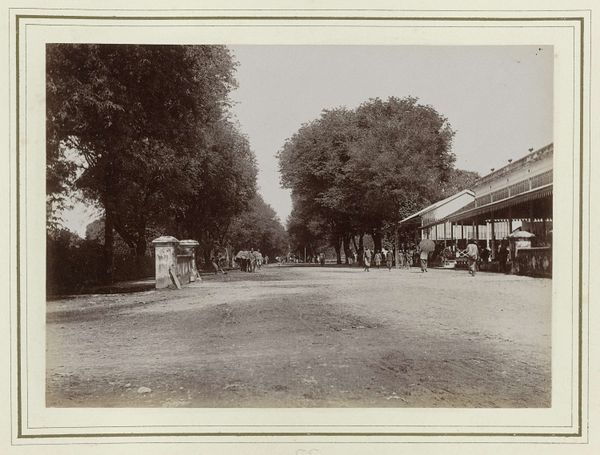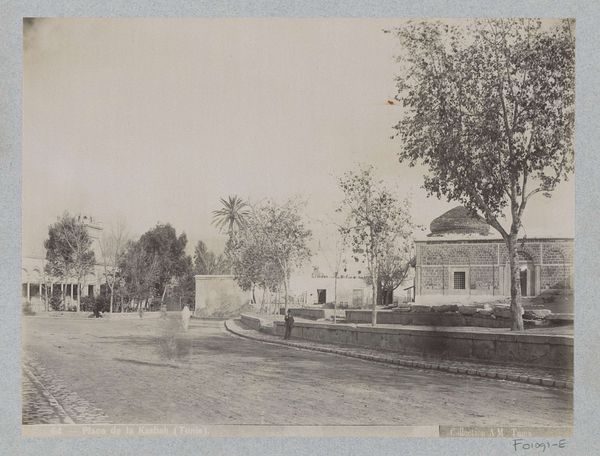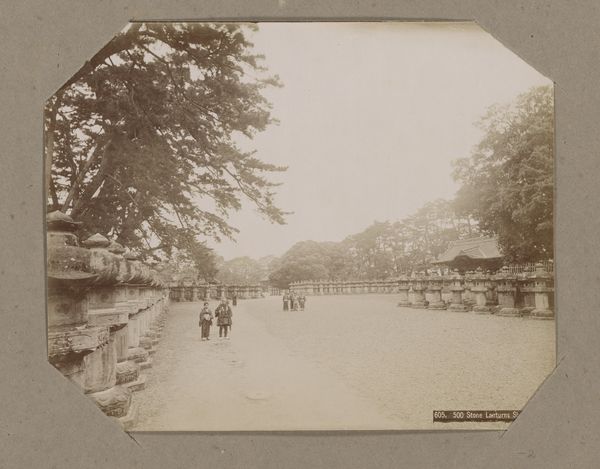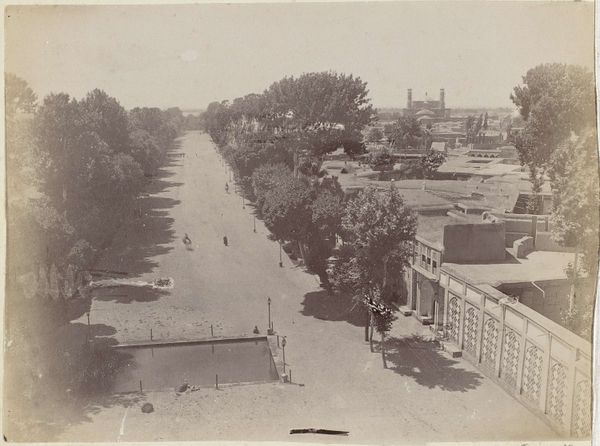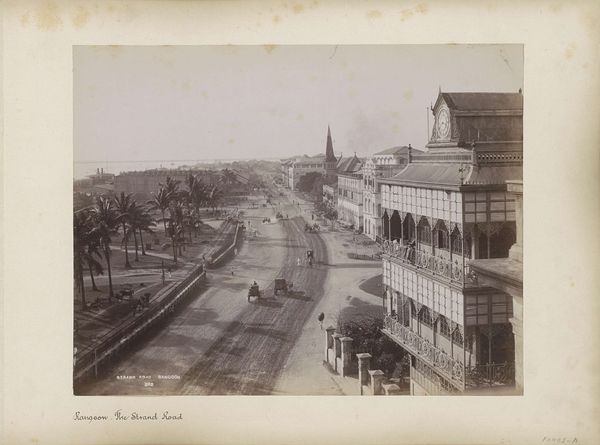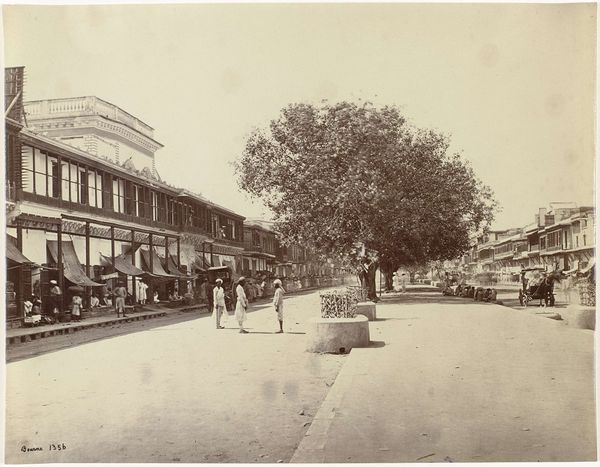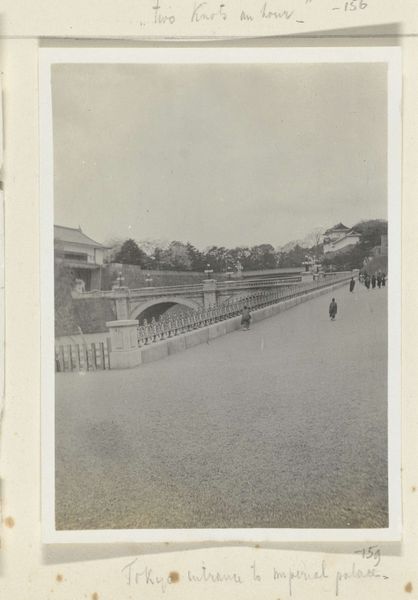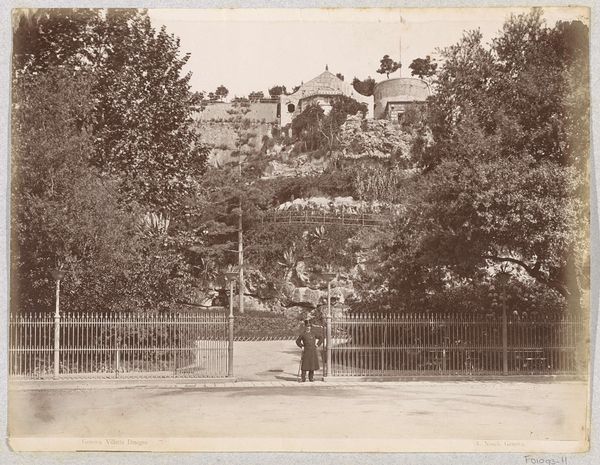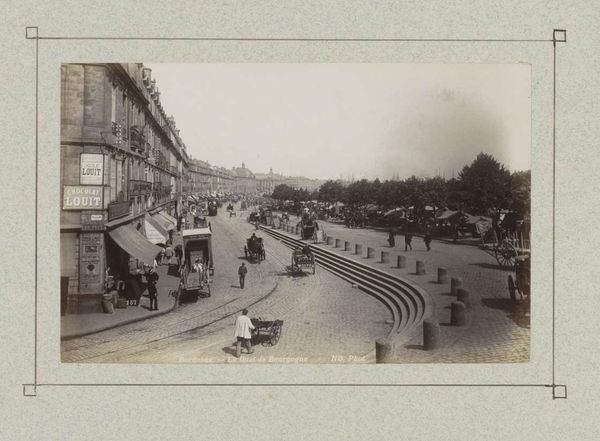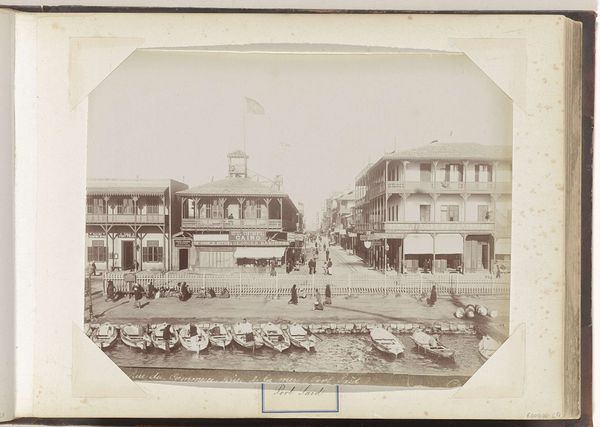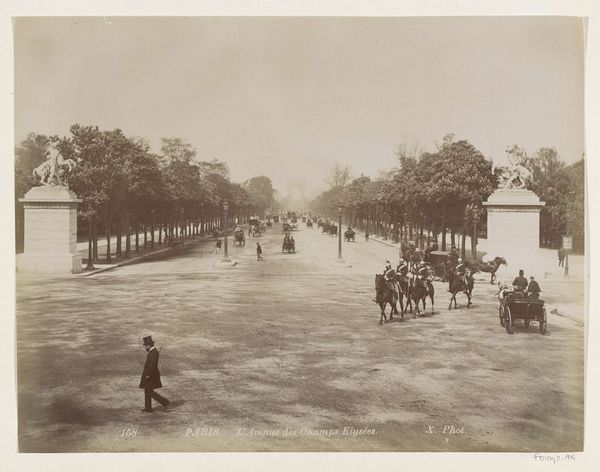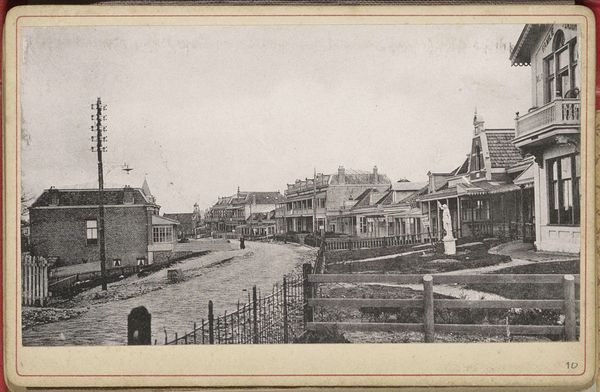
Gezicht op een plein achter een gerechtsgebouw in Singapore c. 1870 - 1900
0:00
0:00
grlambertco2
Rijksmuseum
photography
#
street-photography
#
photography
#
orientalism
#
cityscape
Dimensions: height 211 mm, width 275 mm
Copyright: Rijks Museum: Open Domain
Curator: Welcome. Today, we’re looking at "Gezicht op een plein achter een gerechtsgebouw in Singapore," or, "View of a Square Behind a Courthouse in Singapore" as captured around 1870-1900 by G.R. Lambert & Co. Editor: It's remarkable. The composition immediately strikes me – the contrast between the architecture, rigid in the distance, and the organic arrangements of people, carts and animals in the square...there’s almost a theatrical feel. Curator: Absolutely. If we examine the materiality, we see the photograph itself has acquired a sepia tone with age, contributing to the work's aesthetic. Notice how the sharp lines of the courthouse are set off by the soft focus elsewhere. The photograph’s geometry emphasizes structure through contrast. Editor: It’s impossible to ignore the human element, though. It must have been laborious for both photographer and subject alike – capturing everyday life like this, at the apparent center of a busy colonial outpost with oxen and people, each playing their own role in an unseen drama. Curator: Exactly! The photograph plays upon semiotic readings that emphasize structure and colonial administration, with human element filling those boundaries – notice how individuals are arranged linearly throughout the shot to accentuate these spaces. Editor: Yes, there's certainly a narrative implied in who occupies the most space within the frame. Also I think we shouldn’t forget about what isn’t explicitly shown: Consider the working conditions of the photographer. Or even more fundamentally, what were the labour practices underpinning the lives on display? Curator: True. Through structure and framing we receive context, in which certain elements become foregrounded versus obscured. It forces an examination of power dynamics implicit throughout Singapore's colonial period. Editor: So, we’re seeing not just a view, but a very particular view constructed with deliberate technical choices shaped and limited by what that era’s colonial infrastructure allowed. Curator: Precisely, a view emphasizing order, social function and class in its purest form, one built using silver salts and human endeavors alike. Editor: A fitting conclusion; it leaves one to contemplate the very definition of observation.
Comments
No comments
Be the first to comment and join the conversation on the ultimate creative platform.
